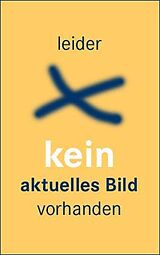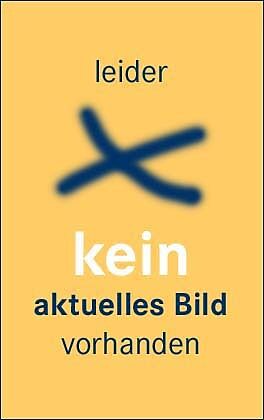Mono: A Developer's Notebook
Einband:
Kartonierter Einband
EAN:
9780596007928
Untertitel:
Englisch
Genre:
Informatik
Autor:
Edd Dumbill, Niel M Bornstein
Herausgeber:
O'REILLY & ASSOC INC
Auflage:
1., Aufl.
Anzahl Seiten:
304
Erscheinungsdatum:
01.08.2004
ISBN:
978-0-596-00792-8
The Mono Project is the much talked-about open source initiative to create a Unix implementation of Microsoft's .NET Development Framework. Its purpose is to allow Unix developers to build and deploy cross-platform .NET applications. The project has also sparked interest in developing components, libraries and frameworks with C-sharp, the programming language of .NET. The controversy? Some say Mono will become the preferred platform for Linux development, empowering Linux/Unix developers. Others say it will allow Microsoft to embrace, extend, and extinguish Linux. The controversy rages on, but--like many developers--maybe you've had enough talk and want to see what Mono is really all about. There's one way to find out: roll up your sleeves, get to work, and see what you Mono can do. How do you start? You can research Mono at length. You can play around with it, hoping to figure things out for yourself. Or, you can get straight to work with Mono: A Developer's Notebook--a hands-on guide and your trusty lab partner as you explore Mono 1.0. Light on theory and long on practical application, Mono: A Developer's Notebook bypasses the talk and theory, and jumps right into Mono 1.0. Diving quickly into a rapid tour of Mono, you'll work through nearly fifty mini-projects that will introduce you to the most important and compelling aspects of the 1.0 release. Using the task-oriented format of this new series, you'll learn how to acquire, install, and run Mono on Linux, Windows, or Mac OS X. You'll work with the various Mono components: Gtk-sharp, the Common Language Runtime, the class libraries (both .NET and Mono-provided class libraries), IKVM and the Mono C-sharp compiler. No other resource will take you so deeply into Mono so quickly or show you as effectively what Mono is capable of. The new Developer's Notebooks series from O'Reilly covers important new tools for software developers. Emphasizing example over explanation and practice over theory, they focus on learning by doing--you'll get the goods straight from the masters, in an informal and code-intensive style that suits developers. If you've been curious about Mono, but haven't known where to start, this no-fluff, lab-style guide is the solution.
Autorentext
Edd Wilder-James is Managing Editor of XML.com. He also writes free software, and packages Bluetooth-related software for the Debian GNU/Linux distribution. Edd is the creator of XMLhack and WriteTheWeb, and has a weblog called Behind the Times.Niel M. Bornstein , with over ten years' experience in software development, has worked in diverse areas such as corporate information systems, client-server application development, and web-hosted applications. Clear and engaging, Niel wrote .NET & XML and co-authored Mono: A Developer's Notebook.
Zusammenfassung
This lab-style guide works through nearly 50 mini-projects that introduce the Mono 1.0 release. It teaches how to acquire, install, and run Mono on Linux, Windows, or Mac OS X and work with the various Mono components - from the CLR to the Mono C.
Inhalt
Foreword; The Developer's Notebook Series; Notebooks Are...; Notebooks Aren't...; Organization; Preface; What This Book Covers; Why Mono?; Conventions Used in This Book; Using Code Examples; Comments and Questions; Acknowledgments; Chapter 1: Getting Mono Running; 1.1 Install Mono; 1.2 Explore Mono; 1.3 Run the MonoDevelop IDE; 1.4 Fit Mono into Your World; 1.5 Join the Mono Community; Chapter 2: Getting Started with C#; 2.1 Say "Hello" to the World; 2.2 Model the Behavior of Real-World Things; 2.3 Avoid Overhead While Passing Data; 2.4 Handle Unexpected Errors; 2.5 Define Function Pointers; 2.6 Add Metadata to Your Types; 2.7 Call External Libraries; 2.8 Package Related Classes with Assemblies; Chapter 3: Core .NET; 3.1 Work with Files; 3.2 Manage String Data; 3.3 Search Text with Regular Expressions; 3.4 Manage Collections of Data; 3.5 Work with Assemblies; 3.6 Start and Examine Processes; 3.7 Multitask with Threads; 3.8 Test Your C# Code; Chapter 4: Gtk#; 4.1 Write a Basic Gtk# Program and Handle Events; 4.2 Arrange Widgets Using Boxes; 4.3 Make Widgets Interact; 4.4 Make Dialogs by Subclassing; 4.5 Draw Graphics; 4.6 Create Menus; 4.7 Organize Data with TreeView; 4.8 Exchange Data with Drag and Drop; Chapter 5: Advanced Gtk#; 5.1 Write a Gnome Application; 5.2 Design Interfaces with Glade; 5.3 Store Configuration with GConf; 5.4 Guide the User with Druids; 5.5 Perform Asynchronous Operations; 5.6 Render HTML; 5.7 Provide Help Files; 5.8 Translate Your Programs; Chapter 6: Processing XML; 6.1 Read and Write XML; 6.2 Manipulate XML in Memory; 6.3 Navigate XML Documents; 6.4 Transform XML; 6.5 Constrain XML Documents; 6.6 Constrain XML Another Way; 6.7 Serialize Objects to XML; Chapter 7: Networking, Remoting, and Web Services; 7.1 Set Up ASP.NET; 7.2 Run Web Applications; 7.3 Deploy Web Services; 7.4 Communicate with Other Networked Systems; 7.5 Access Remote Objects; 7.6 Invoke Remote Procedures with XML; 7.7 Secure Data from Prying Eyes; 7.8 Talk to Databases; Chapter 8: Cutting Edge Mono; 8.1 Maintain Your Sources with the Autotools; 8.2 Write Cross-Platform Compatible Programs; 8.3 Run Java in Mono; 8.4 Run a Development Version of Mono; 8.5 Use Generics; 8.6 Write Mono Programs in Basic; Colophon;

Leider konnten wir für diesen Artikel keine Preise ermitteln ...
billigbuch.ch sucht jetzt für Sie die besten Angebote ...
Die aktuellen Verkaufspreise von 6 Onlineshops werden in Realtime abgefragt.
Sie können das gewünschte Produkt anschliessend direkt beim Anbieter Ihrer Wahl bestellen.
Loading...
Die aktuellen Verkaufspreise von 6 Onlineshops werden in Realtime abgefragt.
Sie können das gewünschte Produkt anschliessend direkt beim Anbieter Ihrer Wahl bestellen.
| # | Onlineshop | Preis CHF | Versand CHF | Total CHF | ||
|---|---|---|---|---|---|---|
| 1 | Seller | 0.00 | 0.00 | 0.00 |
